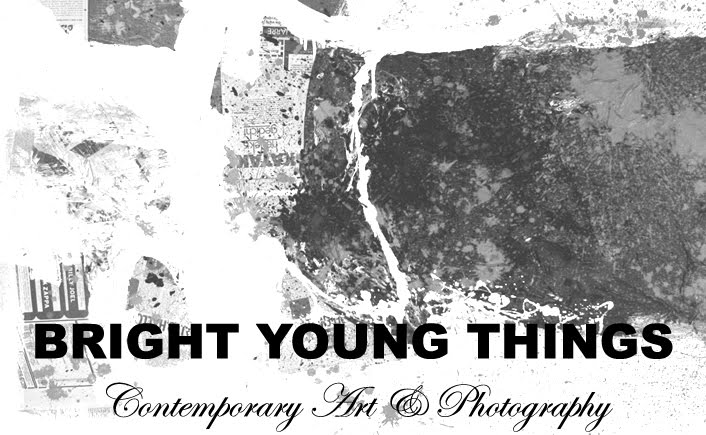


From Richard Avedon and Horst P. Horst to Mario Testino - the image of fashion photography was continuously and often surprisingly redefined in the course of the past century. Now these pictures are emerging as coveted collectors' items
The American fashion and portrait photographer Richard Avedon (1923-2004) had a gift for staging his pictures in unusual settings: In 1955 he had an elegant young lady pose between two dancing circus elephants to offset an evening dress by Dior. The model seems to relate perfectly to the gentle giants. the Hamburg-based fashion photographer F.C. Gundlach, 81, who is now one of the world's leading collectors of fashion photographs, took a picture of two models in Open Art bathing caps against the background of the pyramids of Giza in 1966. However the times in which fashion photography served the purely illustrative purpose of capturing an elegant model in a breathtaking setting, completely void of any irony, are long since gone. Since the beginning of the 1990s, trendy glossy magazines have carried advertising campaigns aimed at transporting an image and an aura, of relating stories, making use of the wealth of material found in art history and popular culture. Photographers often work with codes that only insiders can understand, with the product appearing only on the sidelines if at all. The definition of Beauty has undergone radical changes too: Models are no longer perfectly made up. Instead they slide around on the floor looking bedraggled, are pictured as a reflection of life lived to the extreme or presented as surreal cyborgs.
SUPERFICIAL AND EVER-CHANGING
Being at the point where contractual work, commerce, marketing and artistic ambition meet, fashion photography has always had to live with the image as a superficial genre with an admittedly visual appeal but of extremely brief validity. Here today, gone tomorrow - nothing ages as fast as last season's fashion collection. But perhaps that's not always the case. for Oscar Wilde it was quite clear: "It's only the superficial qualities that last." From this point of view, the Versace campaign by the London-based German photographer Jurgen Teller, 43, can be seen as the perfect example of the subversive style of fashion photography, so typical of the 90's that brushed aside all conventions. In 1996 Teller photographed Kirsten McMenamy naked, seemingly having just got up, a lit cigarette in her mouth, her appendix scar clearly showing, and with a Versace heart badly drawn in lipstick on her breast. The aura of the Venus-like unblemished beauty, cultivated by the classic photographers of this genre has been replaced by the image of the authentic girl next door, warts and all. The expensive luxury product has been removed completely. As Teller explained:"Clothes don't interest me" The succes that he enjoyed as one of the most sought-after photographers in the 90's , who knew how to transport stories and images like no other, proves him to be right. The ascetic heroin chic a la Teller has longe since been replaced by a new preference for opulent stage setting. Elaborate set designs, bizarre backgrounds, symbolic props and the merging of seemingly incomparable poles typify modern day pictures taken by star photographers. One of the most highly revered Vogue photographers, the American Steven Meisel, has a penchant for settings inspired by rococo paintings and bars of dubious repute from the 1920s. His collegue David LaChapelle places his famous faces against dramatically over-the-top backgrounds, while British photographer TIm Walker creates absurddly humourous and ironic situations. And almost as an after-thought, items of clothing and accessories may also appear somewhere in the picture.
PORNOGRAPHY NOT POLITICS
The discussion as to whether fashion photography, with it's effects and superficial consumerism can be called art or not, is more topical than ever. From Jurgen Teller:"My pictures are namely photographs, and as such neither clearly fashion, nor clearly art. It has certainly become difficult to put them in any category." Fashion photography has always been labeled a practical work, a commission to serve the consumer world. Critical and content related statements take second place to an often brash hit-you-in-the-face aestetic form: Glamour or pornographic comments (as in the work of Mario Testino or Terry Richardson) Rather than political discussion.
A PLACE IN THE PANTHEON
Gradually however these borders are becoming indistinguishable. "For some time 'fashion' was like a four letter word in the art world, "Joshua Holdeman, director of the Photographs department at Christie's New York was quoted as saying. Yet today, as Holdeman went on to add, the time span to the earliest examples of this genre is big enough for us to recognise that these are valuable cultural objects that indeed belong in the pantheon of Art History.
Source: Nicole Busing & Heiko Klaas, ARTINVESTOR No.02/2008
Source: Nicole Busing & Heiko Klaas, ARTINVESTOR No.02/2008

No comments:
Post a Comment